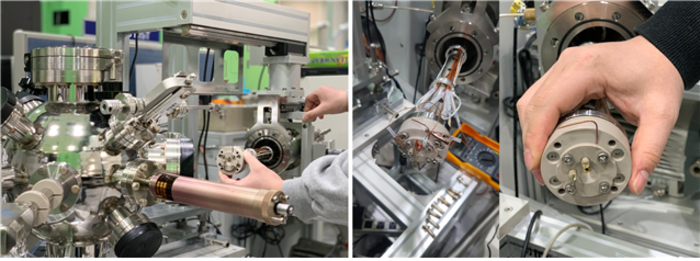A research team from the Korea Institute of Science and Technology (KIST) has developed an operando soft X-ray absorption spectrometry based on a radiation accelerator, to improve catalyst materials and their ability to be employed in carbon neutral technology.
Why is the development of carbon neutral technology so important?
The importance of ‘carbon neutrality’ is expanding, as is the importance of carbon neutral technology, due to climate change caused by global warming.
The Republic of Korea has declared that they intend to be carbon neutral by 2050 and are exerting efforts to reduce their greenhouse gas emissions. In order to achieve this – along with green hydrogen production that reduces the generation of carbon dioxide – carbon neutral technology that utilises carbon dioxide is essential.
How can this technology be effectively utilised?
In order for these carbon neutral technologies to be efficient in reducing greenhouse gas emissions, it is required for the energy necessary to be reduced. This is achieved by increasing the activity of water oxidation electrodes, which induces an electrochemical reaction.
Thus, scientists have attempted to understand the electronic structure of the surface of the catalyst while the reaction continues, as this is an integral step in developing carbon neutral technology. However, due to the difficulty in conducting an experiment in ultra-high vacuum (UHV) conditions, researchers could only indirectly estimate the surface structure through computational calculations.

Photo Credit: Korea Institute of Science and Technology (KIST).
How was the technology developed?
KIST scientists, Dr Hyung-Suk Oh and Dr Woong Hee Lee – from the Clean Energy Research Centre – and Dr Keun Hwa Chae from the Advanced Analysis and Data Centre, developed an operando soft X-ray based absorption spectroscopy based on a radiation accelerator (10D XAS KIST beamline).
KIST has announced that this research has led to the development of a novel strategy to fabricate electrodes, by observing and analysing the surface electronic structure during the reaction of the water oxidation electrode. This can be applied to hydrogen production and the conversion of carbon dioxide in the development carbon neutral technology.
What has the team discovered from this experiment?
The research team measured the electronic structure and spin states of the electrode surface by utilising accelerator-based soft X-ray absorption spectroscopy under the UHV condition. This revealed that general cobalt was reconstructed during the reaction.
A method to improve the performance of the water oxidation electrode, and as a result the carbon neutral technology, was discovered from the change in the electrode material. Scientists have noted that, thermodynamically, cobalt is prone to be in a tetravalent oxidation state under oxidation conditions, and its water oxidation activity is very low.
Therefore, it is necessary to maintain a trivalent oxidation state in order to maintain high water oxidation activity, so that the 3.2 oxidation state and high activity can be obtained throughout the process.
The developed electrode has a more than 1,000 times larger electrochemical surface area compared to a commercial cobalt electrode and is 10 times more effective in hydrogen production performance, when applied to an actual water electrolysis system.
Dr Oh concluded: “By developing an operando soft X-ray absorption spectrometry based on a radiation accelerator, we have taken one step further in understanding the properties of catalyst materials and improving their performance.
“This is an essential technology for the artificial photosynthesis and is expected to be of great help in improving the performance of the water oxidation electrode, which is an important technology for green hydrogen production and electrochemical reconstruction.”
To keep up to date with our content, subscribe for updates on our digital publication and newsletter.









